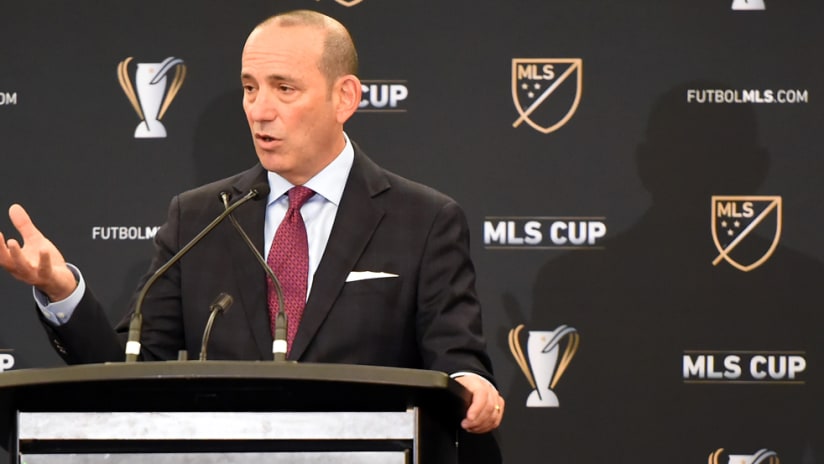TORONTO – Major League Soccer announced another infusion of Targeted Allocation Money on Friday, in a move that Commissioner Don Garber described as being designed to give teams a “diversity of strategy” in constructing their rosters.
In 2018 and 2019, teams will get $1.2 million in guaranteed TAM, with an additional $2.8 million in discretionary TAM available to each team at cost. Teams will have the option to pull forward and immediately use the $1.2 million in TAM designated for 2019.
Garber and MLS Executive VP of player relations and competition Todd Durbin explained the decision to add more TAM in the annual MLS State of the League address on Friday. According to Garber, the move was designed to accommodate MLS’ increasingly diverse group of owners, some of whom are itching to spend more on their rosters.
“Something I’ve said before and something I’ve known for a long time is the biggest accomplishment that this league has really achieved is the expansion of our ownership group, not just in numbers of owners, but in the diversity of owners,” said Garber. “…And each bring different strategy in terms of how they want to spend their money.
“And as MLS was managing most of that strategic end of the business, thanks to all of you becoming more transparent and pushing down a lot of the discretion in terms of how teams spend money, now a team has more of a choice (of how to spend).”
Durbin was asked about whether the league has considered simply adding to the salary cap instead of introducing more TAM. The MLS player personnel chief confirmed that the option has been discussed, but said that the league opts for player acquisition mechanisms like TAM, Designated Players and Homegrown Players to encourage teams to spend in a targeted way.
“We have believed and we continue to believe that instead of increasing spending generally, when we’re increasing spending we should do it in response to a very specific need,” Durbin said. “What’s happened over time with the changes that we’ve made, they’ve been in response to a specific need.
“The Designated Player rule was to increase the top half of the roster, the Homegrown Player rule was because we made the decision that we really need to invest in youth and spend in that space and today I think it’s really about continued recognition that the next stage in our evolution is we need to drive value and quality in middle of roster and specifically at a certain level of compensation.”









